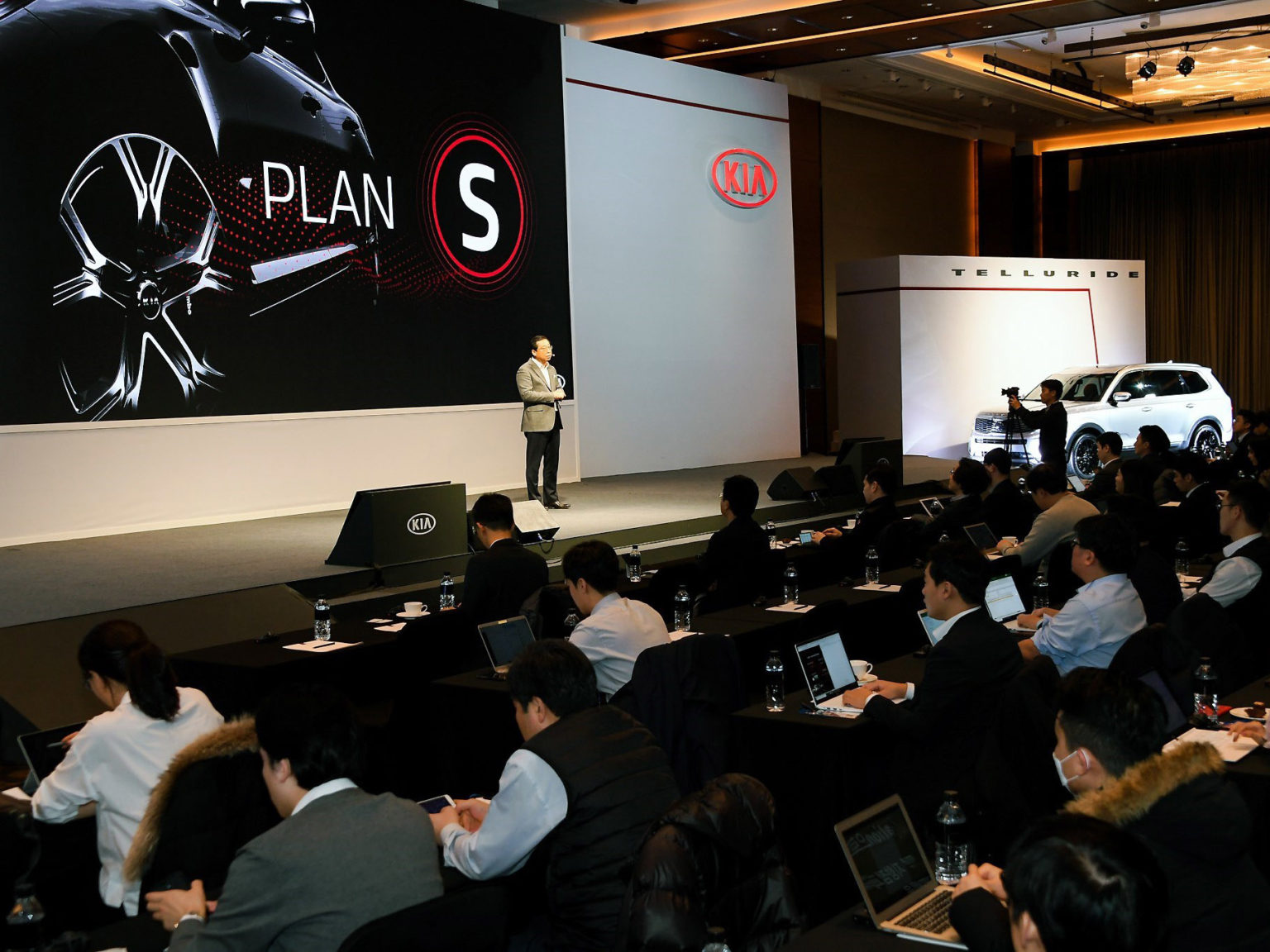Kia is charging ahead with an aggressive electric vehicle (EV) implementation plan that includes 11 new vehicles in the next five years. The strategy, called “Plan S” starts with the company’s first dedicated EV in 2021.
Plan S is a dual-focus shift for the company. On one side they will be progressing toward an EV-centric product strategy while in the other hand Kia will be focusing on customized mobility solutions. They will also be focusing on autonomous vehicle development.
By the end of 2025, Kia plans to offer a full line-up of 11 battery electric vehicles. The company is aiming to have 25 percent of its vehicle sales outside of China come from what they call “eco-friendly cars” by 2025 on their way to achieving a 6.6 percent market share in the global EV market (500,000 annual EV sales excluding China). According to a McKinsey & Co. analysis published April, the U.S. EV market almost doubled to 360,000 EV units in 2018, mainly because of the strong sales performance of Tesla’s Model 3.
From 2022, Kia plans to add EVs in the passenger vehicles, SUVs, and MPVs categories. They further outlined their electric vehicle development:
The dedicated EV model to be launched 2021 will be built on a unique platform specifically engineered to accommodate the car’s world-leading EV powertrain and technologies. It will offer a crossover design which blurs the boundaries between passenger and sport utility vehicles, a future-oriented user experience, a single-charge driving range of over 500 kilometers, and sub-20-minute high-speed charging time.
Across its EV line-up, Kia plans to operate two different types of EVs with different charging capabilities (400V/800V) — high-performance dedicated models and derivative models with reasonable pricing — to meet the diverse needs of customers.
Growth in global EV sales will be pursued in accordance with a customized, market-oriented strategy, which considers regional differences in environmental regulation, subsidies, infrastructure and more.
These EVs are expected to first be sold as a trim level option in Kia vehicles in the same vein as the Niro EV and Soul EV.
Additional Kia expansion is planned to come from car-sharing and e-commerce businesses.
“Plan S is a bold and enterprising roadmap for Kia’s future business transition, buttressed by the two pillars of electric vehicles and mobility solutions,” said Han-woo Park, president and CEO, Kia Motors. “Our approach is to put customers first, and Kia will reinvigorate its brand innovation by developing products and services that offer new experiences for customers.”
Easily missed in this plan is Kia’s proposition to raise the sales of internal combustion engined vehicles while at the same time establish the development system for EV architecture. Though they say that they’ll focus those efforts on emerging markets, it’s relatively safe to say that the Soul, Forte, and Telluride aren’t going away any time soon.
Kia is activating recent partnerships and company share acquitions to get to this goal. Last year, the Korean automaker invested in Croatian performance EV manufacturer Rimac Automobili and IONITY, which specializes in building high-speed charging infrastructures.
They’re also planning on building “Mobility Hubs”, transfer stations between electric vehicles and internal combustion engine vehicles. Long term plans call for self-driving robotaxis and on-demand roboshuttles to also populate these Mobility Hubs.
Kia is part of a car-sharing services joint venture with Repsol, Spain’s major energy corporation, in Madrid via its WiBLE brand.








